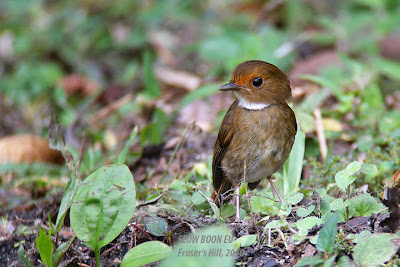These Buffy Fish Owls (~45cm) are the fourth species of owls which I spotted in Penang, other owl species that I had spotted in Penang are the Brown Hawk Owl (a.k.a. Brown Boobook, ~30cm), Barn Owl (~35cm) and Oriental Bay Owl (~30cm). I'm delighted to find out that these species of owls are living freely and healthy in Penang, I hope that I will be able to find other species of Owl in Penang in my next owling.
Following are my first digiscoped pictures of owls during the night, with the only light source from the torch and without using camera flash. No Flash Please...
a pair of Buffy Fish Owl...
the male owl,
and the female owl.
How do I distinguish the male and the female? haha... because I saw them doing that....copulation, so top one must be a male and vice versa.
In 2009, I found a pair of Oriental Bay Owl in one of the corners in Penang. The owls were digiscoped by Dr Chan Ah Lak, and the call was recorded by me. I was lucky to have an opportunity to learn from Dr Chan on the skill and the art of night-digiscoping. Dr Chan is a prominent night owl digiscoper in Malaysia, a.k.a owl guru.
One of the Oriental Bay Owls that I found in 2009
(WARNING: this recorded call is for learning purposes only, beware if you use this as a bird call playback, you might be seriously attacked by the owl and other predators at night.)
Spotted Wood Owl (~45cm) was the first owl I digiscoped during the day time using Dr. Neoh's digiscoping setup. The picture was taken in Seberang Perai, Penang, in 2009, the time when I was a beginner in digiscoping, thanks to Dr Neoh for introducing me to digiscoping.
Spotted Wood Owl, my first digiscoped owl.
A Gentle Reminder: Owl is currently threatened by illegal hunting, due to a recently-emerging taste of owl meat in Asia. Click HERE to read the news report. Please free and save the owls.
Please stop killing and eating these adorable owls. 请停止杀害和食用这些可爱的猫头鹰.
Click on the following links to view other owls which I spotted and digiscoped:
Thanks to all for sharing with me the skill and the art of digiscoping. Happy Owling.












































